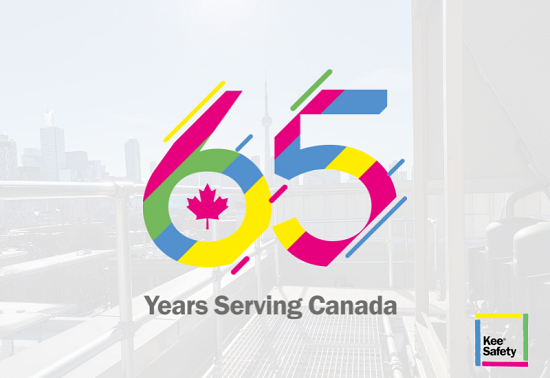 Wednesday, October 2, 2024
Wednesday, October 2, 2024  Wednesday, October 2, 2024
Wednesday, October 2, 2024 
A new mechanical process developed in the late 1920s to milk cows was a boon to productivity, but advances in technology often require adaptations. George Gascoigne, a dairy farmer in Reading, England, saw that his old-style wooden stalls would need to be replaced with steel railings for hygienic purposes and his cows’ safety. Yet, welding pipes together in a wood barn filled with hay would not be a good idea.
Gascoigne devised a cast metal fitting—with a threaded tap hole and integrated grub screw—that could quickly and securely lock into steel railing tubes. An Allen key was all that was needed to fasten the screw.
This was not just a good idea but an enduring one. Gascoigne’s “Kee Klamp” structural pipe fitting design, first produced in 1934 and sold in 1936, still propels a global network of companies dedicated to supplying safety solutions for its customers. To celebrate the company’s foundation in Canada, a stamp to proclaim “65 Years” was created.
With applications for fitted-pipe structures that went far beyond cow stalls—such as aircraft maintenance platforms used during WWII—Gascoigne’s company grew. In 1957, under the leadership of Keith Burnett, an office was established in the west end of Toronto. The following year, Burnett set up shop for the organization in Buffalo, New York. Later, the Toronto office would relocate to Concord, Ontario, and became Kee Industrial Products, Ltd.
Although assembling railings without welding, drilling, threading, or tapping became the predominant use of Kee Klamp, the versatile use of the product became a strong selling point. Kee Klamp was used to build tables, racks, stairs, shelves, awnings, greenhouses, fences, kennels, platforms, mezzanines, stands, mounts, and more.
A few of the more interesting and notable installations include:
Although Kee Industrial Products was successful, if Kee Klamp remained the only product offered, it is questionable how long the company would last in the 21st century.
Using Kee Klamp straight and angled fittings, plus uprights and counterbalanced bases, KeeGuard roof edge railing systems were introduced in 2000. Its genius is an easily installed modular system that does not penetrate the roof membrane. As with virtually all current Kee Safety products, it is designed and independently tested to meet or exceed standards and regulations issued by agencies such as CSA and OHS.
KeeGuard created the modern rooftop passive fall protection industry in North America. The revolutionary system has since been enhanced by an array of rooftop fall protection products (e.g., Kee Dome, KeeLine, Kee Walk, Kee Anchor, Kee Rooftop Crossovers).
The year 2000 also marked the introduction of Kee Lite. Instead of galvanized steel used for Kee Klamp, Kee Lite fittings are constructed of high-grade Aluminum Silicon Magnesium Alloy. This makes them strong and lightweight. With its superior corrosion resistance, Kee Lite is often chosen for extensive railing systems seen at water and wastewater treatment plants.
Recent years have seen a renewed emphasis on ground-based and in-plant safety railings and related safety products and systems, such as Kee Track. Introduced in late 2020, Kee Track is a rigid rail, overhead access track system that provides fall protection for workers in vehicle service and other facilities.
During the “middle age” of the company, marketing partnerships were formed to sell niche equipment such as Cimex cleaning machines for escalators and products for widespread use such as Revvo casters.
By 2006, however, the “Kee” product line was rapidly expanding, emphasizing compliance-based products and systems. Kee Industrial Products, Ltd. became Kee Safety, Ltd. to reflect the evolving corporate positioning.
Today, Kee Safety, Ltd. is joined by more than 30 companies and several Kee Safety offices worldwide, all focused on supplying safety solutions for customers. Although the “65 Years” stamp is meant to celebrate longevity, it also signifies a company that has plans to keep growing throughout this century.
Christian King, General Manager for Kee Safety, Ltd., expects continued product innovation and further inroads into new and traditional markets. With safety at the forefront, the history of Kee shows that what began on a dairy farm can go just about anywhere.
Visit our website to learn more about Kee Safety: keesafety.ca